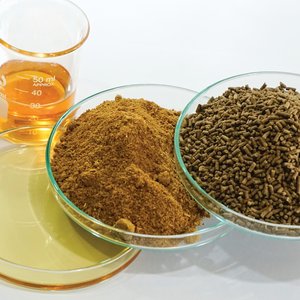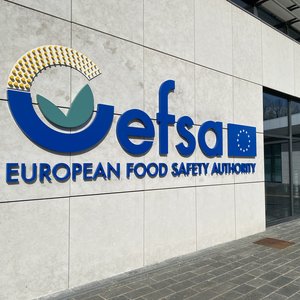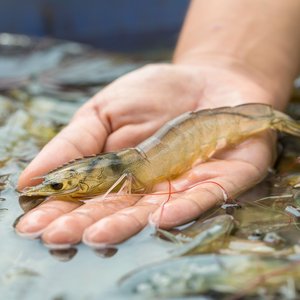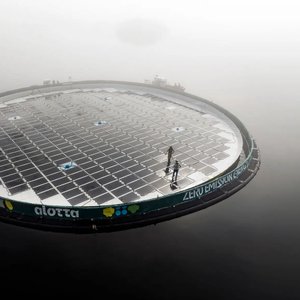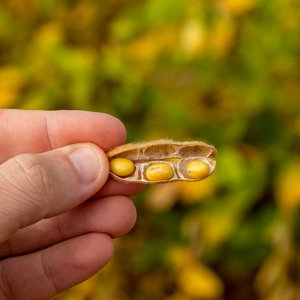Vacuum infusion of salmon feeds is the application of liquid marine or vegetable oil to dry extruded feeds under a negative air pressure. During the vacuum cycle air is removed from the coating chamber and from the air filled pellet voids. By allowing the pressure to release back to that of atmospheric, oil is forced throughout the interior voids of the pellet. The pellets are infused with oil.
The principals are simple, however, the variables that can affect the process are many. Over time we have experienced many questions and tackled many problems directly and indirectly related to vacuum infusion of extruded salmon feeds. Many clients who are new to vacuum infusion often have misconceptions and misunderstandings about what is possible with vacuum infusion. They may blame the VIS for not achieving high enough oil levels, when the real culprit is not enough pellet expansion, or they wonder why the vacuum target takes too long and the vacuum pump oil is continually being contaminated with water, the culprit here is too high a moisture in the product to be vacuum infused normally. There are many more such variables to be considered.
The following write up is a very brief and general guide to understanding and trouble shooting problems associated with vacuum infusion of oils into extruded salmon feeds
Basic operating recommendations for vacuum infusion:
Vacuum Infusion Systems (VIS) are used to infuse liquid ingredients into extruded pellet or shaped feeds. For salmon and trout feeds this generally means the infusion of marine and or vegetable oils.
What are the ideal pellet conditions for vacuum infusion? Over the last ~ 15 years many VIS experiments have been conducted with varying results, the best of these results have been applied in production. Vacuum infusion although relatively new, is well past its infancy and is now a useful and necessary production tool for salmon (fin fish) feeds and pet foods production. Universities and private companies continue to fine tune vacuum infusion techniques and processes. (UAS has provided Vacuum Infusion Systems and technical support to 3 universities including the University of Santiago Chile, Texas A&M, & University of Adelaide Australia).
Salmon feed.
Much has been learned regarding best practices for vacuum infused salmon feed production. In general; vacuum infusion as part of the entire process relies on quality production from selection of raw materials, formulation, grinding, extrusion, expansion, drying, cooling, temperature, moisture content, and product conveying. The old saying “Garbage in = Garbage out” applies here and so Quality in must = Quality out!
Raw Materials:
- Starch and protein ingredients can affect grinding and extrusion as well as nutrition.
- Raw ingredients must be maintained at a specific quality if consistent product is to be produced.
Grinding:
· Experimentation and experience has shown that grinding does have a major effect on pellets in terms of structural quality and this can ultimately effect vacuum infusion.
- Uniform fine grinding of feeds to 70% particle sizes under 0.25 mm and 100% particle sizes below 0.4 mm generally results in acceptable to good quality extruded feed products. By use of hammer mill technology an industry rule of thumb for salmon feed production is “the finer the grind the better”.
- It has been learned that pellet durability increases with uniform fine grinding of high protein formulations as used in Salmon feed production.
- Finer ground starches gelatinize easier. Finer ground proteins bind more readily.
Extrusion:
- Uniform extruded pellets will result from use of quality equipment operated properly.
- Good preconditioning from 2 - 3 minutes helps to ensure maximum gelatinisation of starches during the extrusion process.
- Poorly extruded products can vary in uniformity of size and structural integrity resulting in a product that will not dry evenly, will fracture easily, will not absorb liquid additives uniformly and may have poor overall appearance.
Expansion:
- Extruded pellets expand as they leave the extruder and are released to atmospheric pressure.
- Over expanded feeds may be more fragile. Over expanded feeds can float even after vacuum infusion due to too low a bulk density.
- Under expanded feeds will result in feeds that cannot absorb the total required oil formulated in the diet. They will also be physically harder and generally sink faster due to a higher bulk density.
- Under expanded, higher density feeds, will not dry as easily as greater expanded feeds, after vacuum infusion they may appear oily / wet.
- Expansion is critical to vacuum infusion and must be controlled to produce pellets with the desired characteristics needed to allow for the right amount of free area within the pellet in order to absorb the total required oil as formulated in the diet. Designed and accurately produced expanded feeds are essential to provide a balanced slow sinking salmon feed.
Drying:
- Drying must be uniform from pellet to pellet, in order to provide a balanced diet. As an industry rule of thumb, variations in moisture from pellet to pellet greater than 1% - 1.5% are considered below modern industry drying standards.
- Good practice indicates that the dryer be capable of drying all that the extruder can produce and a little extra capacity is recommended.
- Average high quality salmon feeds are dried to a range from 6% to 9%. The dryer must be guaranteed to meet all drying requirements at the required capacities. Too small a dryer will cause problems in drying uniformity, moisture target, vacuum infusion, and ultimately product appearance and nutritional quality.
Cooling:
· Cooling after drying improves feed quality and reduces the amount of moisture vaporization within the vacuum vessel during vacuum cycle.
· Feed quality is improved due in part to an increase in pellet durability resulting from the starch and binding portions of the formula curing or hardening. After cooling the more durable feed can better withstand the rigors of conveying and oil addition equipment.
· Cooling efficiency improves as a result of moisture evaporation. As liquid is evaporated from the pellets during cooling, the change in state from a liquid to a vapour removes heat; this results in an energy use advantage. This information is readily available from cooler manufacturers.
· Cooling hot feed after vacuum infusing oil can and does entrain / trap liquid water within the pellet reducing its availability to aid in cooling. This has been shown to reduce cooling efficiency. It requires more energy and sometimes, bigger capacity coolers / fans to reach the desired final temperature.
Temperature:
· Before there was vacuum infusion technology, the production of high fat feeds required the feed to be hot off the dryer, and with the application of hot oil the feed was able to absorb more oil than cooled feeds. With the advent of vacuum infusion technology it was soon learned that hot feed was not required to attain maximum oil inclusion. It was also learned that there are many benefits to using cooled feed prior to vacuum infusion.
· Hot oil that has been infused into hot feed may readily vaporize volatiles and or leak out of the feed during the early stages of cooling. This results not only in messy process equipment / plant and lost value but also in unbalanced final feed. Hot oil oxidizes more rapidly than moderate temperature oils.
· If the feed is cool and the oil temperature only raised enough to accommodate flow-ability and mixing into solution of any additives, there will be less possibility of flashing off or leaking out. In some cases use of ideal temperatures allows the oil to thicken in the pellet before it arrives into the cooler avoiding any losses.
· In practice the use of oil at temperatures marginally higher than the dry cool feed being infused, has helped reduce oil leakage post vacuum infusion.
Moisture content:
· Moisture content of feed to be vacuum infused is important. Too high moisture will result in moisture evaporation within the vacuum vessel. This moisture will reduce vacuum efficiency because as liquid water changes state from a liquid to a gas it occupies ~1600 times it’s original volume at atmospheric pressure and greater volumes under vacuum. This means that the greater the available moisture in the product the longer / harder the vacuum pump must work. As the liquid continues to changes state to vapour (gas) and occupy space within the vessel, the vacuum pump must work to remove the vapour in attempt to achieve the targeted pressure set point.
· When the vacuum infusion system is used as a “vacuum dryer” moisture is given up in the lubricating system of the vacuum pump, which will require frequent oil changes in order to prevent damage to the vacuum pump.
· Water ring type vacuum pumps that are resistant to moisture are available. Although generally they will not provide the maximum levels of vacuum required for proper vacuum infusion in salmon feeds. They also consume large amounts of water and energy.
· Although vacuum drying / cooling is a known and used process in the food industries, its use in salmon feed production would likely be prohibitive in terms of capital cost and time required to remove the moisture.
· Again if proper extrusion, drying, and cooling are achieved prior to vacuum infusion the VIS will operate problem free, as well the feed quality will be maximized.
SUMMARY
1. Vacuum Infusion of good quality manufactured feed will produce the desired nutritional balance and can provide further advantage by allowing the infusion of expensive heat labile additives such as pigments and medicines.
2. Properly formulated and “engineered” extruded feeds will have a positive effect on the performance of any vacuum infusion system.
3. Careful selection and adequate sizing of both the dryer and the cooling system to ensure uniform moisture and proper temperatures are a prerequisite to providing the very best quality vacuum infusion possible.
4. Ideally the moisture level of salmon feed before vacuum has been found to be between 6 and 9 %. Many producers choose to operate at about 7% or 8% to avoid any chance of creating an off spec product. Clearly any equipment selected should be able to accommodate these requirements even if the desire is to seek higher moisture levels. (Safety margins are always an advantage)
5. It has been learned and can be calculated that lower temperatures of dry feed entering the vacuum vessel have several advantages including lowering the pressure point at which any remaining water may flash off. This allows the vacuum system to reach maximum levels of vacuum in acceptable time limits.
6. Very low pressure is often required to achieve maximum reduction of air in an acceptable amount of time. Larger and denser feed products require more effort to remove all of the air and this is accomplished by use of time and pressure. When there is not enough time available, the use of maximum negative pressure is required. A vacuum pressure of 85% - 97 % of absolute is commonly required with many larger diameter feeds.
7. There are many variables that affect salmon feed production, including all of those listed in this report. Clearly the best choices for quality reliable feed production lie in choosing the correct equipment, with the correct capacities and installing / operating them in the correct manner.
8. If the right equipment is used, configured, and operated, then experimenting or developing special application / leading edge feed products becomes far less challenging. To develop leading edge feeds demands total control of all parameters above and below target points.
These concepts are well founded in our modern salmon feed industry.



